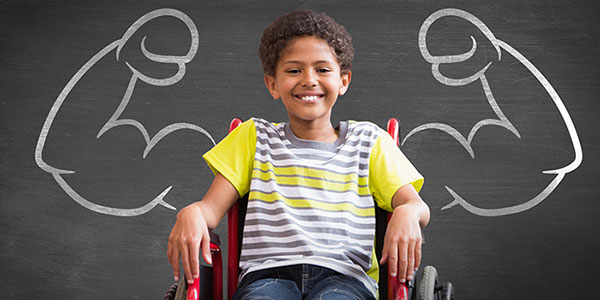What is Duchenne muscular dystrophy?

A boy with Duchenne who is now in a wheelchair full-time. – Photo by CDC
March 22, 2022
Muscular dystrophy is a group of diseases that cause progressive weakness and loss of muscle mass. Duchenne syndrome is the most common form of muscular dystrophy and almost always affects males.
What does Duchenne do to a person’s body?
This disease prevents the body from producing the dystrophin protein. Dystrophin is a protein that helps absorb shock during muscle contraction as well as helping to repair muscles following an injury. Without it, muscles are damaged and weakened, causing severe effects and a much lower life expectancy.
What are the symptoms and signs of Duchenne?
Struggling with movement is one of the biggest signs of having Duchenne. These include:
- Not walking until 18 months
- Walking on toes with legs apart
- Walking with stomach pointed out
- Falling frequently
- In need of assistance to get up
- Gower’s Maneuver (standing up by getting on all fours and then walking their hands up their legs)
- Enlarged calves
- Fatigue
- Emotional/behavioral challenges such as depression and angry/argumentative problems
- Problems with memory
- Learning difficulties
- Delayed speech
- ADHD, anxiety, autism, epilepsy, and other mental health/neurological disorders
How does Duchenne progress over time?
When a patient is 0 to 4 years old, signs of Duchenne may already be present. Soon after birth, inflammation may occur. As early as one year of age, a patient may have muscle fibrosis. Delays in cognitive developments such as motor delays or speech delays may also happen.
From 5 to 7 years of age, the disease will continue to progress. 5- to 7-year-olds with Duchenne will have progressive muscle weakness as well as enlarged calves, toe walking, difficulties when transitioning from lying down to standing, and fat accumulation in muscle.
From 8 to 11 years old, motor milestones will be delayed if a child has Duchenne. They will have decreased walking abilities and may begin using a wheelchair part-time.
From 12 to 19 years old, a patient will have reduced upper limb, lung, and heart function. They will have loss of ambulation (the ability to walk independently without assistance), so use of a wheelchair or other assistive devices may be needed full-time. Ventilatory support is often required when a patient reaches this age group, and they are typically unable to perform activities of daily living independently.
Lastly, for anyone older than 19, increasing heart problems will occur. Often this results in heart failure and the current life expectancy for a Duchenne patient is 30 or earlier.
What is the treatment/cure to Duchenne?
Many advancements have been made involving treating Duchenne, but unfortunately, there remains to be no cure. Once muscle is lost to Duchenne, it cannot be brought back. Current treatments only slow the progression; they are unable to reverse the effects. Undergoing physical therapy is a common treatment used for Duchenne patients as well as medications such as corticosteroids.
Who does Duchenne affect?
Primarily, Duchenne occurs in males, but females can be carriers and, in rare cases, contract the disease. The disease affects 1 in 3500 to 1 in 5000 people.
As a whole, muscular dystrophy diseases affect 250,000 people in the US. Each year, 20,000 new patients–typically boys between the ages of 3 and 5–are diagnosed with Duchenne muscular dystrophy, causing them to eventually not be able to complete everyday tasks such as walking. Medical professionals are trying to work toward a cure for Duchenne so that many lives can be saved.





